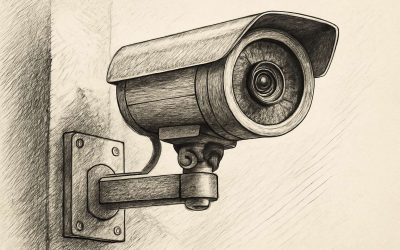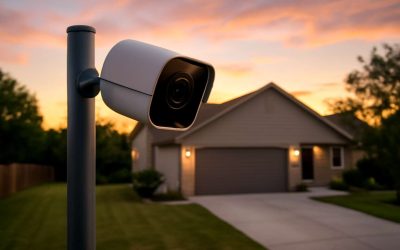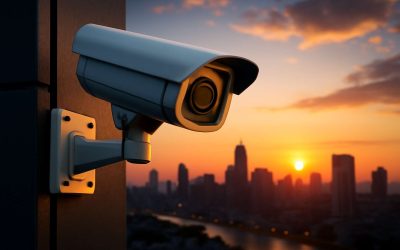
Having a wireless security camera installed in your home is a great way to protect your property from theft. However, there are many different things to consider before making the decision to purchase one. Read on to find out what you should look for.
Battery-powered vs mains-powered
Choosing between a battery-powered and mains-powered wireless security camera is an important decision. These types of devices offer several benefits over traditional wired cameras. In addition to convenience, they provide more protection.
One advantage of battery-powered security cameras is the ability to record footage even when there is no power. The battery life depends on the settings, as well as environmental conditions. Some models also allow you to save videos to an SD card or cloud storage.
Another benefit of battery-powered outdoor cameras is that they are incredibly portable. They don’t need to be installed, and can be moved to a new location without having to worry about cables. They can last for days or weeks without running out of battery, and won’t shut down during a prolonged power outage.
Wi-Fi vs Bluetooth
Whether you’re looking for a wireless security camera, or you’re considering adding one to your home, you should be aware of the difference between Wi-Fi and Bluetooth. Both of these technologies allow you to connect to a camera from your mobile device, but they have different advantages and disadvantages.
The most obvious benefit of the Wi-Fi is that it provides a faster connection. Wifi can support more users, and it is capable of connecting to a wider area. It also has better security.
In addition, it is easier to use. It has a smaller footprint, and it consumes less power than Wi-Fi. However, it is not always available.
Bluetooth is a wireless communication standard that uses radio frequencies and infrared rays to communicate with other devices. It uses low power, and is easy to set up. It is most useful for data transfers between two devices, though it does not work over very long distances.
Chokepoints
Almost every network has chokepoints. These are the places where multiple attack paths converge before reaching a key asset. They degrade performance and create vulnerabilities. The most notable ones are the Black Sea and US inland transport corridors. The best way to avoid this is to mitigate them.
The best way to do this is to build a resilient infrastructure. The most important step is to identify the chokepoints. Then, you can map them out and mitigate them. For example, there are numerous chokepoints in southern Brazil, but few are as prone to disruption as those in the US inland corridors. This is especially true for high value goods.
Several key technologies have become the Achilles heel of the modern network. The hub and spoke architecture may be the most obvious culprit. In many cases, the backbone is a network of networks, and the resulting data feeds can exceed the original design specifications.
Recharging wire-free batteries
Using a battery powered security camera is beneficial in many situations. For example, if you live in a remote area where there is no Wi-Fi, a battery operated security camera can be a useful tool. It can still record and save footage to local storage and also backup footage to a cloud when Wi-Fi is restored.
Battery powered cameras are not ideal for continuous recording. While they can be used in this situation, they can only stream live video when motion is detected. If you want to use a camera for continuous recording, you should consider using a wire camera instead.
The battery life of a wireless security camera can vary from one model to the next. Battery powered cameras can last for a few months on average. But you may need to recharge them on a regular basis.
Internet-enabled
Whether you’re a landlord looking to secure your rental properties or a renter who wants to keep tabs on their property, an Internet-enabled wireless security camera can help. It’s easy to set up and can save you time and money. It’s also portable, so you can take it anywhere.
A Wi-Fi-enabled security camera is generally connected to a router that serves as the home’s central hub. The router acts as a network bridge, and the camera connects to it through the unique SSID (service set identifier).
Some cameras, like the ones from Lorex, use their own wireless network. Others, such as the Nest wireless video doorbell, record footage to a micro SD card. In the event of an outage, the footage can be saved on a local device.



0 Comments